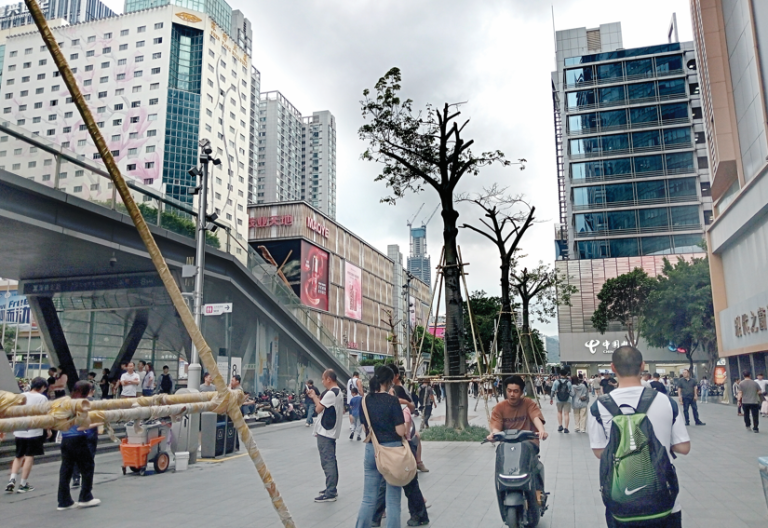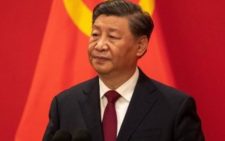Lesson from China for Africa about digital space future

Upon landing at one of China’s top-tier airports-Beijing Capital International, Shenzhen Bao’an, or the strikingly futuristic Beijing Daxing International- one is immediately enveloped in a world where technology doesn’t just exist; it thrives.
From self-service kiosks to robots that greet, guide, and even warn travellers, the seamless integration of innovation is nothing short of breath-taking.
Smart trolleys help with navigation, facial recognition systems for check-in, and intelligent path technology all work in harmony to make travel hassle-free. Welcome to China, a nation that has made technological sophistication part of daily life.
At the centre of the digital revolution is a bold vision, one shared recently during the China-Africa Seminar on Digital Transformation and Integrated Development held in Beijing. Organised by the Academy for International Business Officials (AIBO), the seminar brought together officials from 10 African countries- Egypt, Ethiopia, Gambia, Ghana, Kenya, Lesotho, Mozambique, Nigeria, South Africa, Uganda, and from Zanzibar- to share their journey in digital governance and offer replicable models for Africa’s growth.
Smart governance
Cao Zhen of the China Electronics Technology Group Corporation (CETC) unpacked China’s progress in building a people-centric digital government, detailing its evolution through exploration, early construction, full-scale rollout, and today’s intelligent governance phase.
China, Zhen explained, has integrated government affairs platform to allow citizens access to real-time administrative information, track processes, and navigate public services with ease.
From a global perspective, e-government adoption is rising, with the average E-Government Development Index (EGDI) improving from 0.598 in 2020 to 0.6102 in 2022.
The transformation extends beyond offices and into its smart cities. Through its Integrated Operation and Command Centre (IOCC), China employs embedded sensors, AI, cloud computing, and IoT (Internet of Things) to manage essential services—healthcare, lighting, environment, parks, and agriculture—with stunning efficiency. Nowhere is this more evident than in its traffic management systems.
Consider Kenya’s capital Nairobi, where daily gridlocks and road crashes are all too common. China, with a population of 1.4 billion, uses intelligent traffic systems to remarkable effect. Through Zipper vehicles and movable road barriers, Chinese cities can dynamically alter road lanes, creating or removing bus-only lanes based on real-time traffic data.
Emergency vehicles such as ambulances or fire engines are given priority with sensor-driven clearance strategies, and intersections are actively monitored to prevent spillovers. Bus Priority Systems adjust traffic lights to favour public buses, encouraging punctuality and greater use of public transport.
Traffic flow in cities like Beijing is managed not by police officers waving batons but by remote-controlled barriers, sensors, and cameras. Rogue motorists are flagged in real-time, enhancing road discipline. As a result, cases of traffic violations and bribe collection are limited to almost zero.
Smart bus stations—clean, quiet, and orderly—feature digital displays showing multilingual real-time bus arrival updates. Here, there are no shouting touts (makanga) or chaotic scrambles.
Payments are mostly cashless, via transport cards, mobile apps, or QR codes. While cash is accepted, having an exact amount of the bus fare is often preferred. Smart buses also have screens displaying information in multilingual about the next or approaching stage. This is also accompanied by an automated voice meaning you can board and alight a bus at the next station with zero human interaction.
Even bicycles are smart. With China’s robust bike-sharing ecosystem, e-bikes serve as the “last mile” link in the public transport chain.
Professor Yang Baozhen, former ambassador at the Chinese Embassy in France, credits China’s rapid transformation to its unwavering commitment to poverty eradication. Over 800 million people have been lifted out of extreme poverty in the last 40 years. Through comprehensive reforms, special economic zones, and targeted training programmes, the Chinese government has equipped its people with the tools to work and thrive.
“In 1978, China’s per capita GDP was only US$158, with over 80 percent of its population living below the poverty line—poorer even than sub-Saharan Africa at the time,” Professor Baozhen noted, recalling the days people would greet each other in the morning by asking if they had eaten. Today, the question is whether they found parking.
After Beijing’s infamous “airpocalypse” of the early 2000s—a time of suffocating smog and public outrage, the crisis marked a turning point. China has since closed coal-fired power plants, transitioned to electric buses, capped vehicle numbers in major cities, and launched reforestation programs. Today, Beijing’s tree-lined boulevards are a testament to the government’s commitment to green living. The trees are part of a massive national effort—billions planted through government-led afforestation programs.
China and Kenya are charting their own unique paths in the global shift toward electric mobility. As a world leader in electric vehicle (EV) production, China has built a robust ecosystem powered by strong government support.
Kenya, on the other hand, is still in the early stages of its e-mobility journey. The government is rolling out policies aimed at making electric vehicles more accessible through tax incentives and encouraging local assembly of EVs. A national e-mobility policy is also in the works, designed to steer the country toward a more sustainable transport future.
Driving through the streets of Beijing today, one quickly notices the usual roar of engines is replaced by a soft hum—thanks to the rise of electric vehicles led by companies like Build Your Dream (BYD). This shift hasn’t just cut down pollution and oil use; it’s transformed the feel of the city itself.















